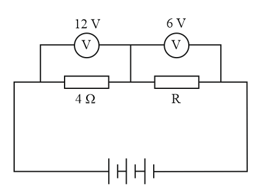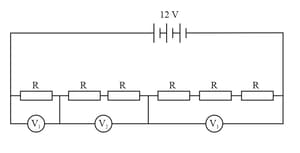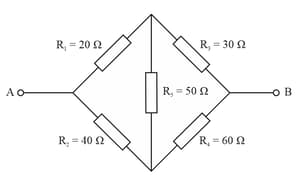Abhishek Chandra Solutions for Chapter: Electricity, Exercise 3: EXERCISE
Abhishek Chandra Physics Solutions for Exercise - Abhishek Chandra Solutions for Chapter: Electricity, Exercise 3: EXERCISE
Attempt the practice questions on Chapter 1: Electricity, Exercise 3: EXERCISE with hints and solutions to strengthen your understanding. Eduwiser's CBSE PHYSICS FOR CLASS X solutions are prepared by Experienced Embibe Experts.
Questions from Abhishek Chandra Solutions for Chapter: Electricity, Exercise 3: EXERCISE with Hints & Solutions
Two metallic wires and of same material are connected in parallel. Wire has length and radius and wire has length and radius . What is the ratio of the total resistance of parallel combination and the resistance of wire ?
What is the smallest and the largest resistance you can produce in a circuit by combining two hundred resistors?
Three identical lamps are connected in parallel with a battery. The total current in the circuit is . What will be the total current in the circuit when one of the lamps fuses?
The effective resistance when two resistors are connected in series is . If the effective resistance when the same two resistors are connected in parallel is , what are the resistances of the given resistors?
In the given circuit, calculate the potential difference across the battery, the current through the resistance and the value of the resistance .

You are given a number of resistors. What is the minimum number of these resistors you will need to get a resistor?
In the circuit given, what will be the readings of voltmeters , and ?

Calculate the equivalent resistance between the points and in the given figure.

